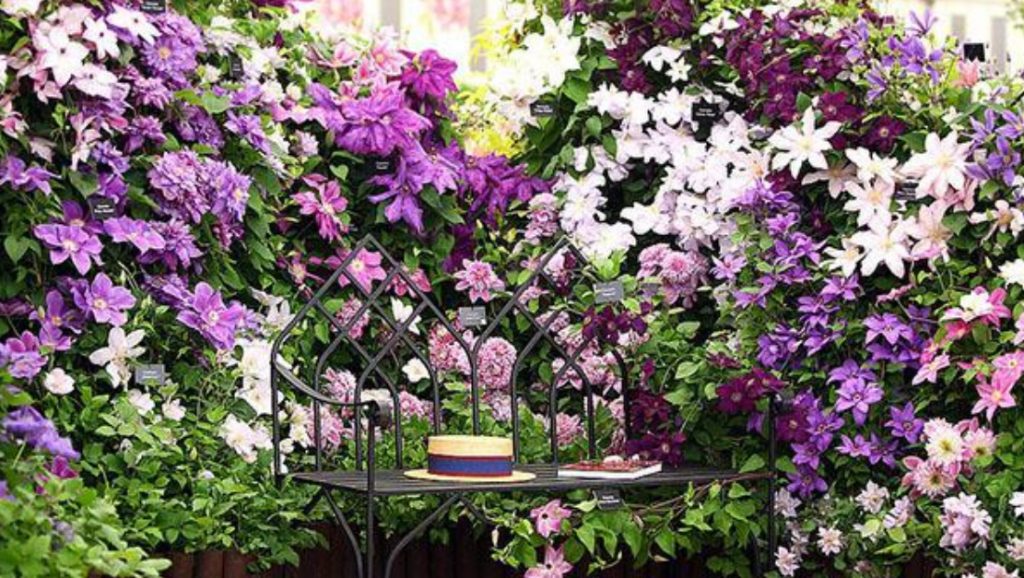It is rightfully considered one of the most beautiful and unpretentious lianas and is usually used for landscaping walls and pergolas. But today we present 10 ideas that will help you go beyond the standards and color the garden with many — faced clematis-unusual, effective and without much cost.
1. Creating a blooming wall
The combination of several varieties of clematis can not fail to catch the eye. It doesn’t matter whether they contrast in color or not, whether they bloom together or separately, whether they have large or small flowers — such a long-flowering wall will always be spectacular. The photo shows a joint planting of clematis viticella ‘Abudance’, ‘Royal Velours’, ‘Romantika’ and ‘Venosa Violacea’ varieties.
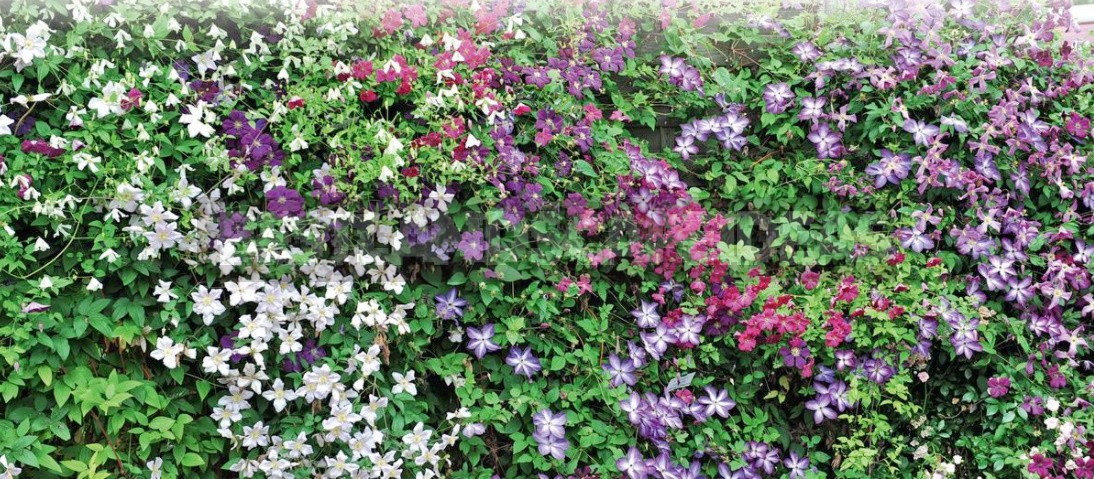
2. Form a blooming trunk
Clematis is an excellent decoration for tall tree stems with a deep-lying root system. On the free part of the trunk, secure the net support for the Liana, and plant the plant itself as close as possible to the stem on the North side in the opening between the thick roots of the tree. The landing pit should be twice as wide as the container diameter and 5 cm deeper, and the bottom should be loosened. Put a seedling with a wet root ball in the center of the pit and bury it so that the root neck is slightly sunk. After planting, seal the soil, water the seedling liberally, and direct the lashes to the support or, if they are of sufficient length, fix them on it.
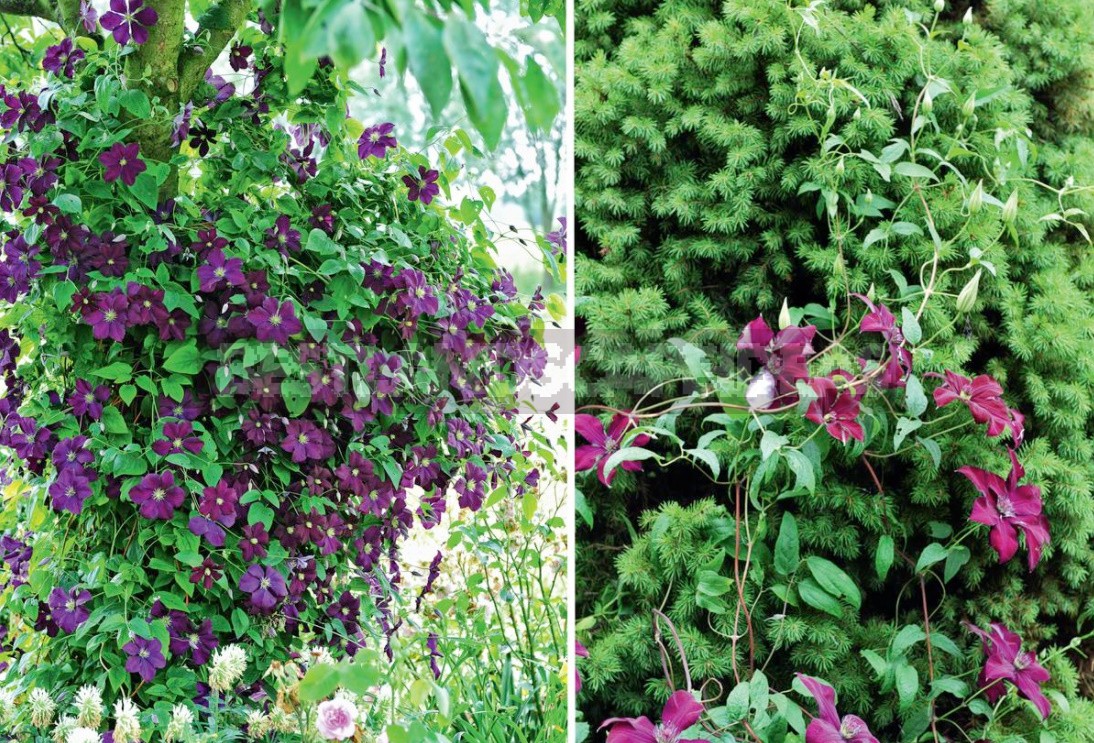
Important: from the second year, this clematis will require enhanced feeding.
Tip: be careful — trees with a superficial root system are not suitable for this idea.
3. Shade the needles
According to a similar scheme, you can put clematis on the bare trunk of a pine tree. Interesting and unusual look knyazhiki climbing the crown of representatives of varieties Picea glauca. Clematis viticella varieties effectively decorate low compact coniferous varieties, to do this, plant them at a short distance from the lower border of the crown with a dug-in delimiter of root systems. In rockeries, the combination of creeping conifers and clematis used as groundcover plants will attract attention.
4. Decorating shrubs
Plant clematis from the shady side on the border of the projection of the crown of the shrub at an angle of 45° towards the center of the Bush, and carefully tie the shoots of the plant to the branches. For this idea, use clematis of the third group of pruning (15-20 cm from the ground).
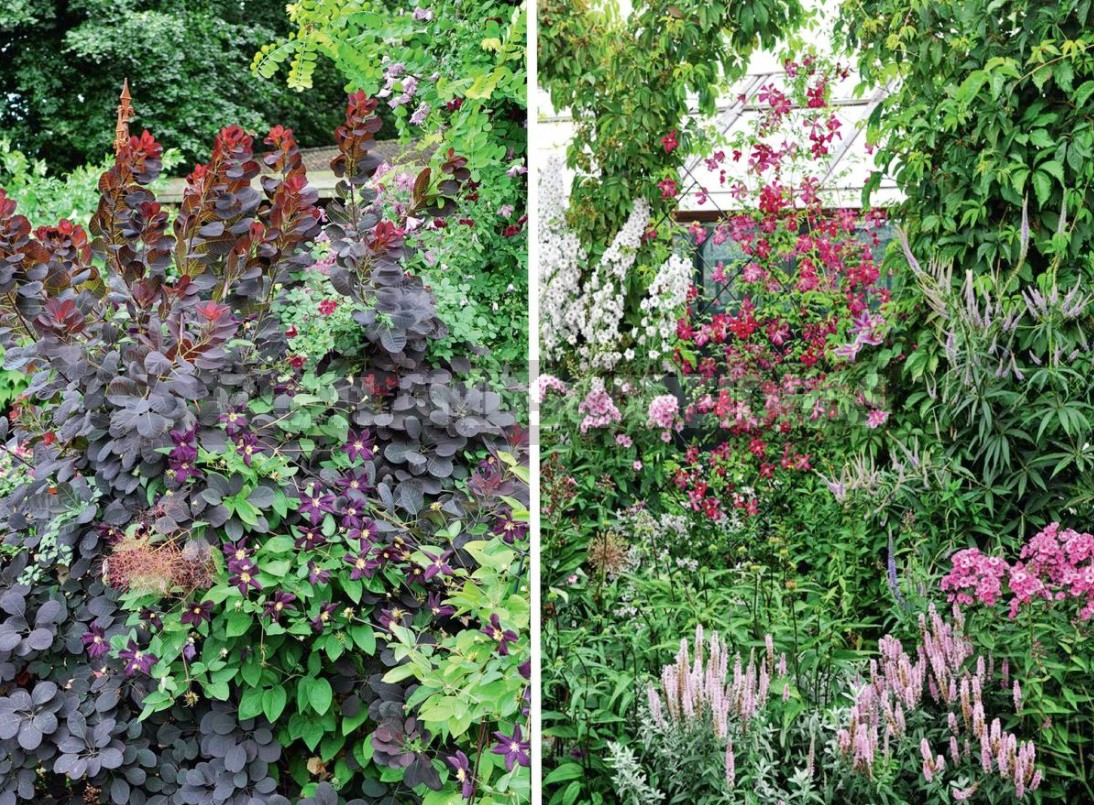
5. Combine with other vines
Clematis effectively complement the vertical gardening formed by other “climbers”. For example, they create bright color spots in summer in the openings of arches made of Parthenocissus, and in autumn, when it turns red, they serve as a green background for It. Beautiful and easy to care for combinations of clematis of the third group of pruning and annual or herbaceous perennial lianas with shoots dying for the winter. Clematis (the first group of pruning) can be combined with tree lianas, whose shoots are not cut for the winter.
6. Use in meadow flower beds
It is believed that the bright and even luxurious appearance of clematis does not allow them to be included in meadow flower beds. Well, how will they fit into planting with cereals or perennials of natural appearance with small flowers? Actually, it’s good. But only if you choose the right types and varieties. Of course, it is not necessary to plant in the meadow flower Terry clematis. But herbaceous (varieties Clematis integrifolia, and in the South-and Clematis heracleifolia, Clematis manschurica), as well as Clematis fusca and Clematis tangutica, low clematis of the third group of pruning with not very large flowers will look harmoniously in such flower beds.
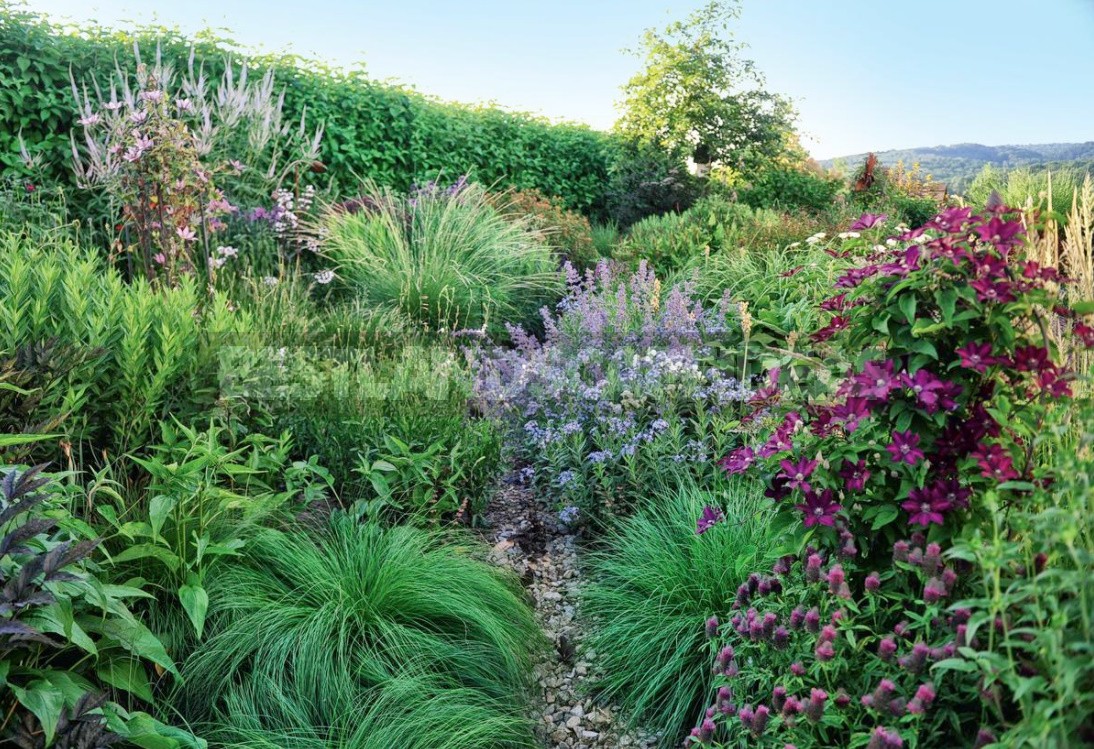
7. Creating borders
If you direct the shoots of clematis not on a vertical, but on a low long horizontal support, you will get luxurious flowering borders.
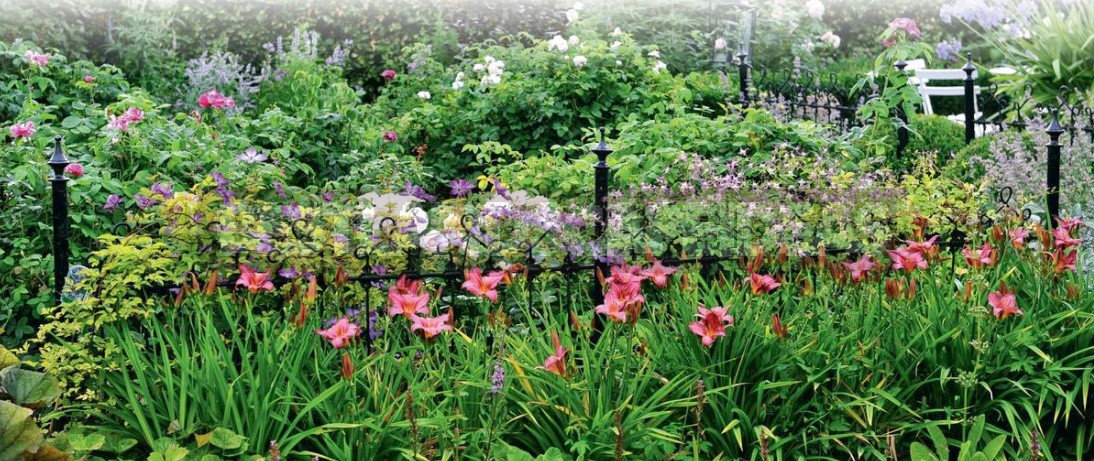
8. Vystelim living rugs
If the clematis is not supported at all, it will only have to crawl on the ground. You will not believe it — clematis can be used as groundcover plants! Especially good for this purpose are the varieties Clematis integrifolia (they themselves always like to “lie down”, despite the presence of supports) and Clematis viticella.
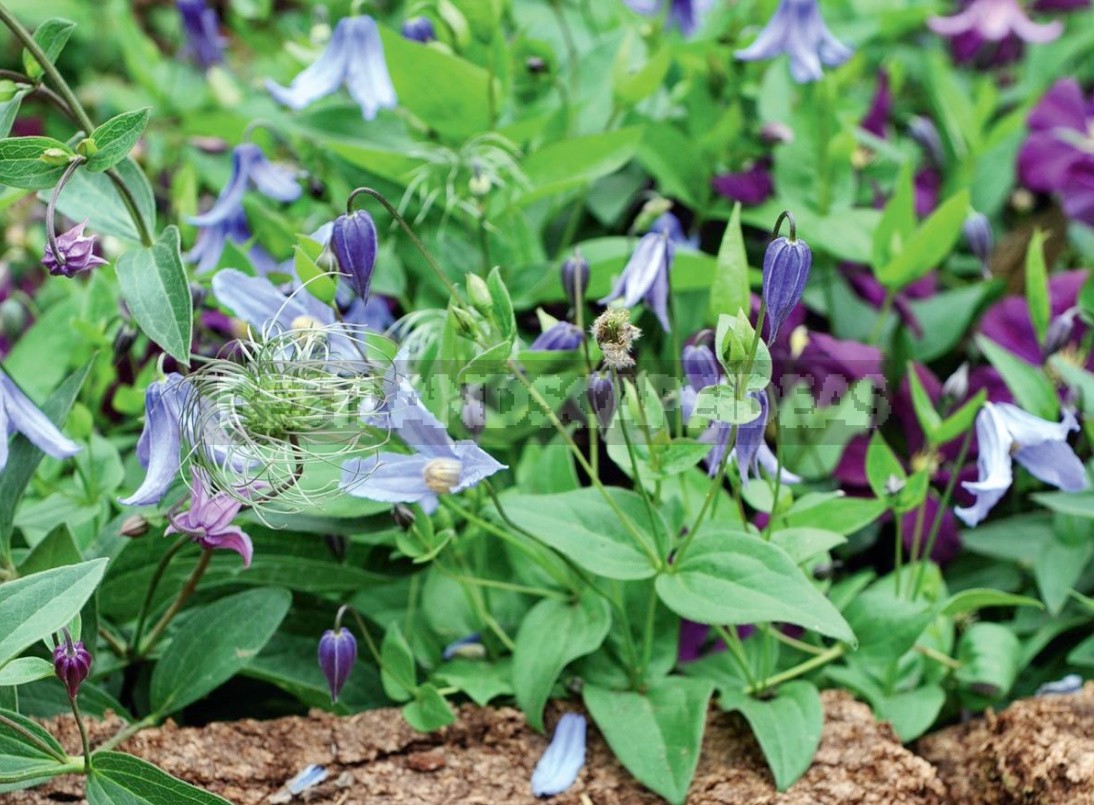
9. Choose dwarf varieties
The last time the breeders pay special attention to the low, compact varieties for small gardens. Their representatives can be grown as” blooming balls “in flower beds among other perennials, like the Estonian ‘Piilu’ in the photo, or even on the terrace in a container. English breeder Raymond Evison bred a series of such varieties. It is called the Boulevard Collection and includes about 20 clematis. Moreover, it has two varieties — ‘Bijou’ and’ Filigree’, which reach a height of only 30-50 cm. They were even grown in balcony boxes.
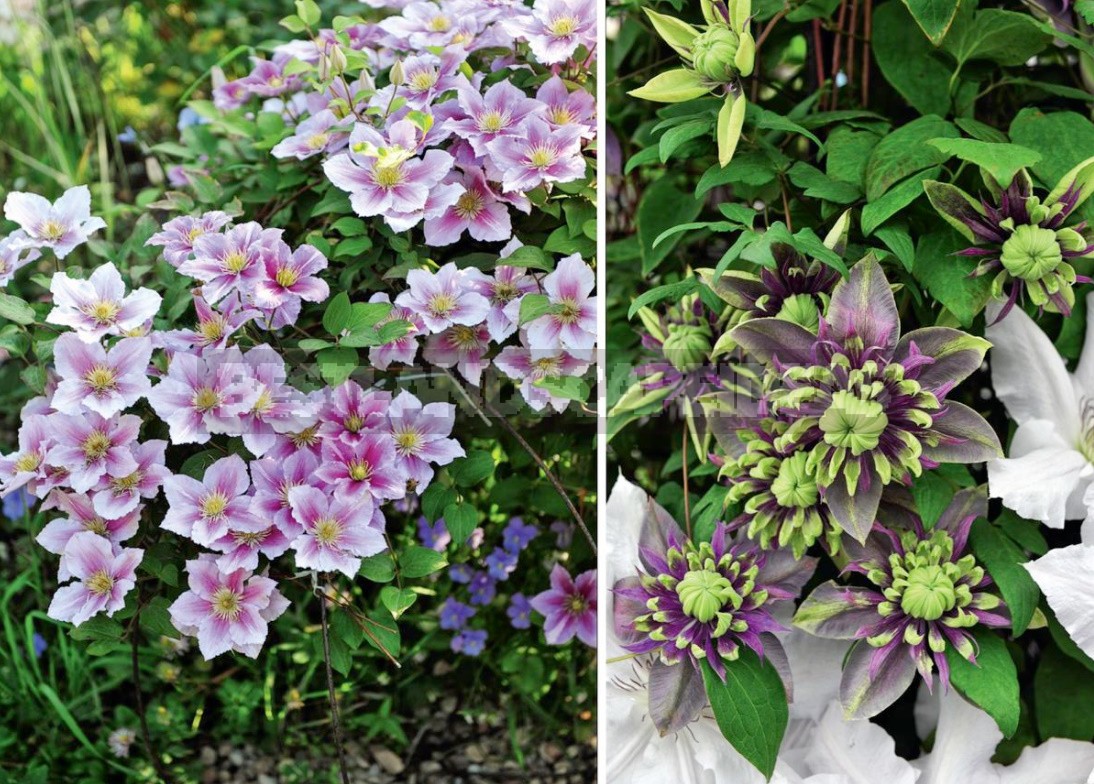
10. Growing sissies
It also happens that clematis has sunk into the heart of the gardener, but it is pointless to plant it on the site: the tender plant simply can not stand the frost, no matter how it is covered. These are, for example, varieties ‘Viennetta’, ‘Pistachio’ or sensational at the last flower show in Chelsea clematis ‘Taiga’. The compact root system allows you to grow them in pots, which can be put in the garden in summer.
Important: for the winter, pots with non-hardy clematis-sissies must be removed to a non-freezing room.
